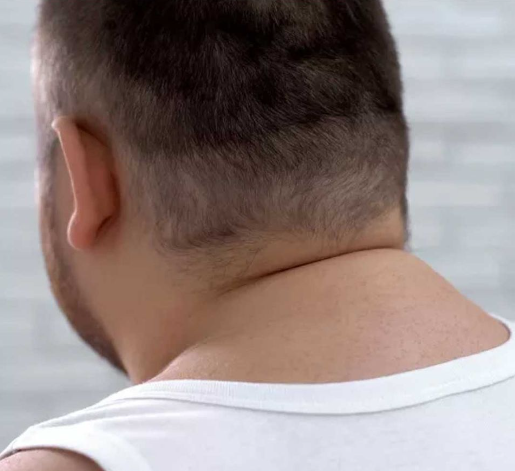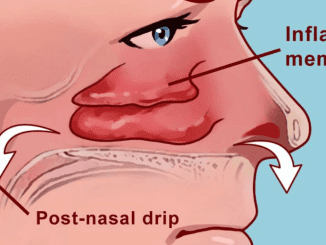A buffalo hump—also known as dorsocervical fat pad—refers to an accumulation of fat at the back of the neck, nestled between the shoulders. While it can be a cosmetic concern, it’s often a symptom of underlying health issues that require attention. Whether caused by medications, medical conditions, or lifestyle factors, addressing the root cause is essential. Let’s dive into what a buffalo hump means, its common causes, and the steps you can take to manage or eliminate it.

What Causes a Buffalo Hump?
Buffalo humps can develop for a variety of reasons, ranging from hormonal imbalances to lifestyle factors. Understanding these causes can help you pinpoint why it’s happening and what you can do about it.
1. Prolonged Use of Corticosteroids
Medications like corticosteroids, often prescribed for conditions such as asthma or autoimmune diseases, can lead to fat redistribution in the body. This may result in a buffalo hump.
2. Obesity and Weight Gain
Excess weight can accumulate unevenly, particularly in areas like the neck and shoulders. Obesity is one of the most common contributors to buffalo humps.
3. Cushing’s Syndrome
Cushing’s syndrome occurs when the body produces excessive cortisol, leading to fat deposits in unusual areas, including the back of the neck. Other symptoms often accompany this, such as high blood pressure and weight gain in the torso.
4. Poor Posture
Years of slouching or poor ergonomic habits can create the appearance of a buffalo hump, even when fat accumulation isn’t the primary issue.
5. Osteoporosis and Spinal Changes
In cases where osteoporosis leads to spinal curvature or kyphosis, the resulting posture can exacerbate the appearance of fat buildup in the neck area.
Recognizing Symptoms Beyond the Hump
While the hump itself is the most obvious sign, there are often other symptoms that can clue you into its underlying cause.
- Unexplained Weight Gain: Particularly in the upper body and midsection.
- Thinning Skin: A hallmark of hormonal imbalances like Cushing’s syndrome.
- High Blood Pressure or Elevated Blood Sugar: Signs of metabolic disorders.
- Fatigue or Muscle Weakness: Often linked to hormonal imbalances or medications.
- Neck or Shoulder Discomfort: The hump’s presence can strain surrounding muscles.
If you notice any of these symptoms, it’s essential to consult a healthcare professional for an accurate diagnosis.
How Is a Buffalo Hump Diagnosed?
A doctor will typically begin with a physical examination, noting the size, texture, and location of the hump. From there, diagnostic tests may include:
- Blood Tests: To check hormone levels and rule out conditions like Cushing’s syndrome.
- Imaging: X-rays or MRIs to assess structural changes in the spine or identify fat deposits.
- Medication Review: To determine if any current treatments could be contributing to fat accumulation.
This comprehensive approach ensures that the underlying cause of the hump is properly identified.

Effective Treatment Options
The treatment for a buffalo hump depends on its root cause. Here are some common approaches:
1. Adjusting Medications
If corticosteroids or other medications are the culprit, your doctor might adjust the dosage or recommend alternatives.
2. Weight Loss and Exercise
For humps caused by obesity, losing weight through a combination of diet and exercise can significantly reduce its size. Targeted strength training and stretching can improve posture, making the hump less noticeable.
3. Managing Hormonal Imbalances
Conditions like Cushing’s syndrome often require medications, surgery, or radiation therapy to regulate cortisol levels.
4. Surgery for Severe Cases
If the hump is particularly large or causing significant discomfort, liposuction or surgical removal may be considered. However, this is usually a last resort after other treatments have been explored.
5. Physical Therapy
A physical therapist can provide exercises and techniques to improve posture, reduce discomfort, and strengthen the muscles around the neck and shoulders.
Lifestyle Changes to Prevent and Manage Buffalo Humps
Making small, consistent changes to your lifestyle can help prevent a buffalo hump from worsening or recurring. Here’s what you can do:
1. Maintain a Healthy Weight
Stick to a balanced diet rich in whole foods, lean proteins, and vegetables. Reducing overall body fat can make a noticeable difference.
2. Improve Posture
Be mindful of how you sit and stand. Use ergonomic furniture, take breaks from sitting, and do regular stretching exercises to combat poor posture.

3. Stay Active
Incorporate regular physical activity into your routine, focusing on strength training and flexibility. Yoga and Pilates are excellent for improving posture and reducing neck strain.
4. Monitor Your Medications
Always discuss potential side effects with your doctor, especially for long-term medications like corticosteroids.
5. Regular Checkups
Routine visits to your healthcare provider can catch hormonal or metabolic issues before they progress.
When Should You See a Doctor?
If the buffalo hump appears suddenly, grows rapidly, or is accompanied by other concerning symptoms like high blood pressure or extreme fatigue, don’t wait—seek medical advice. Early intervention can prevent further complications and ensure that any underlying conditions are treated promptly.
Coping with the Emotional Impact
Let’s face it—a buffalo hump can feel embarrassing or even alienating. The physical changes it brings might affect your confidence or make you self-conscious. You’re not alone in this struggle, and it’s okay to seek support. Joining a support group or speaking with a counselor can help you navigate the emotional aspects while you work on improving your physical health.
Conclusion: Taking Charge of Your Health
A buffalo hump isn’t just about appearance—it’s a signal from your body that something needs attention. Whether it’s caused by weight gain, medications, or hormonal imbalances, understanding the underlying cause is the first step toward finding a solution. With the right combination of medical advice, lifestyle changes, and support, you can address the issue effectively and regain both your confidence and comfort.
So, don’t ignore that hump. Take action today—because your health is worth it.


